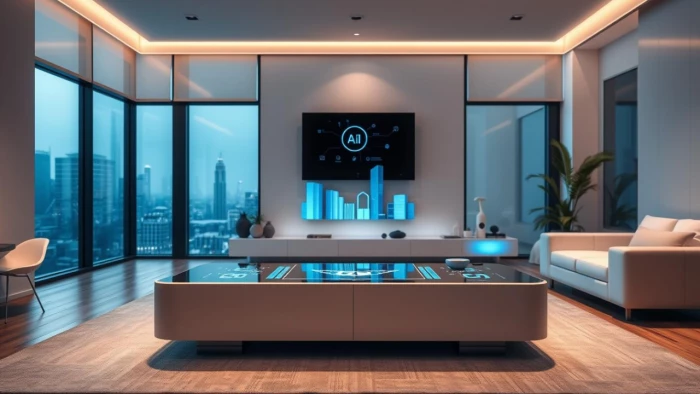

Interior design has always been a blend of creativity, functionality, and personal taste. Traditionally, people relied on professional designers, inspiration magazines, or hours of scrolling through Pinterest to bring their vision to life. However, today, artificial intelligence (AI) is entering the world of home décor, making interior design more accessible, efficient, and personalized than ever before.
AI-powered tools are changing the way homeowners, architects, and designers approach spaces. By using algorithms, these platforms analyze user preferences, existing furniture, room dimensions, and even current design trends to generate tailored design solutions.
Some of the ways AI is making an impact include:
These are some recent stats that show how AI is being adopted in interior design, home décor, and related fields:
These numbers show AI is not just a curiosity—it’s already part of the workflow, helping with creativity, efficiency, cost, visualization, and client satisfaction.
Here are some of the leading tools people are using now—some are more design-oriented, some more visualization, some for mood-boarding or AR/VR. Depending on your needs (amateur vs professional, cost vs features), different ones may suit you better.
| Tool | What it’s Good For / Strengths | Potential Drawbacks or What to Consider |
|---|---|---|
| Planner 5D | Easy 2D/3D design, mood boards, walkthroughs, good for amateurs and pros both. | Limited features on free tiers, some advanced renderings cost more. |
| RoomSketcher | Strong for floor plans, drag-and-drop furniture, visualizing spatial layouts. | May have constraints for photo-realism, cost of higher-end features. |
| Foyr Neo | Offers quick renders, good furniture libraries, lighting simulations. | Learning curve, cost for full features. |
| Homestyler | Great for AR/VR previews, for playing around with décor, colors, placements. | May be less precise for architectural details. |
| DecorMatters | Particularly good for mobile-first users, furniture/decor suggestions, AR to see items in your space. | Catalog limitations depending on region; AR may require good lighting and space. |
| Midjourney / DALL·E / Stable Diffusion (text-to-image generators) | Excellent for inspiration, style exploration, mood boards, generating ideas (e.g. “modern boho living room at dusk”) quickly. | Less precise for actual dimensions; outputs often need human refinement. Licensing / print rights to consider. |
| Adobe Firefly | Offers AI-assisted image/gen-art, patterns, textures, good for creatives already in Adobe ecosystem. | Cost, some limitations unless on pro/paid plans. |
| Houzz Pro (if accessible) | Combines mood boards, product marketplace, client communication etc. | Might be more oriented to professionals; potentially costly. |
| Canva (with AI features) | Quick mockups, decor visualization, easy to use for non-designers. | Simplified features vs more specialized design tools. |
As AI continues to evolve, we may soon see fully automated interior design systems that can redesign a home at the click of a button—choosing furniture, décor, and even suggesting paint finishes delivered right to your doorstep. But rather than replacing human creativity, AI is likely to complement it, giving homeowners and designers smarter tools to express their unique style.
✨ Final Thought: Decorating your home with algorithms isn’t about losing the human touch—it’s about enhancing creativity and making design accessible to everyone. With AI, turning your dream home into reality has never been easier.
Be the first to post comment!